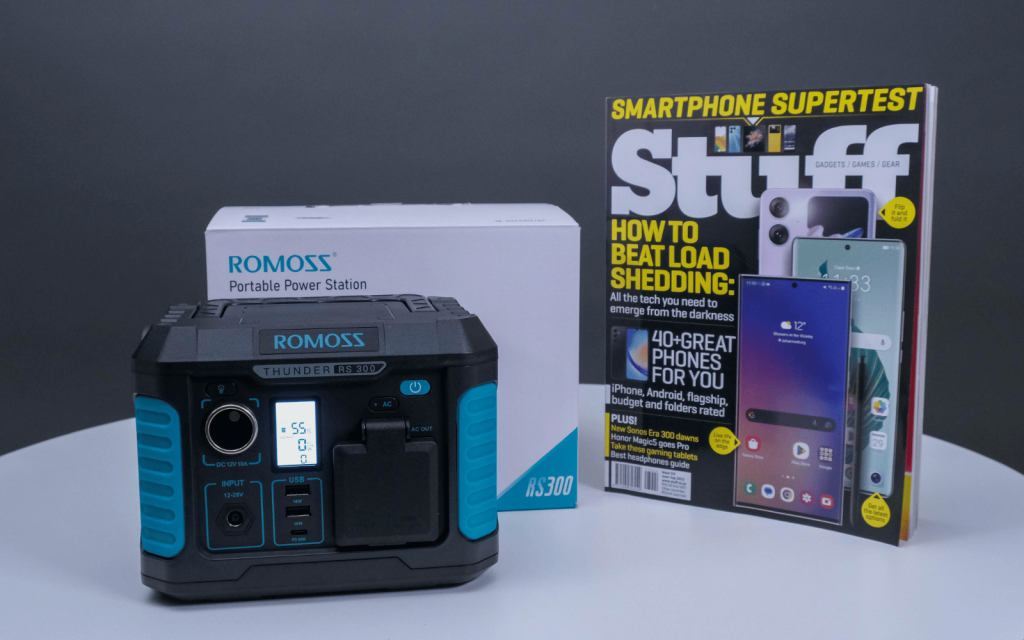If this is your intro into the world of portable power, you can't do much better than Romoss' Thunder RS300. It's cheap, quiet, won't deplete prematurely and most importantly, can keep the Wi-Fi up and running.
-
Ease of use
-
Battery
-
Practicality
-
Value
At this point, power stations are so much more than the gimmicky little items that would keep your phones charged on some camping trip. There’s a reason everyone and their grandmother is trying to get their hands on these things. They’ve become almost a requisite in a South African’s daily routine – costing less than a traditional generator – and keeping the basics going during a particularly nasty bout of load shedding.
Romoss is one of the brands taking advantage of the country’s deplorable need for portable power solutions. We’ve played around with the brand’s mid-range offerings before – this time taking a dive into the company’s ‘budget’ tier in the form of the Thunder RS300, coming in at R4,000. It can’t do everything (and certainly won’t power anything heavy-duty) but it can do the basics, and for most, that’s plenty.
A for effort
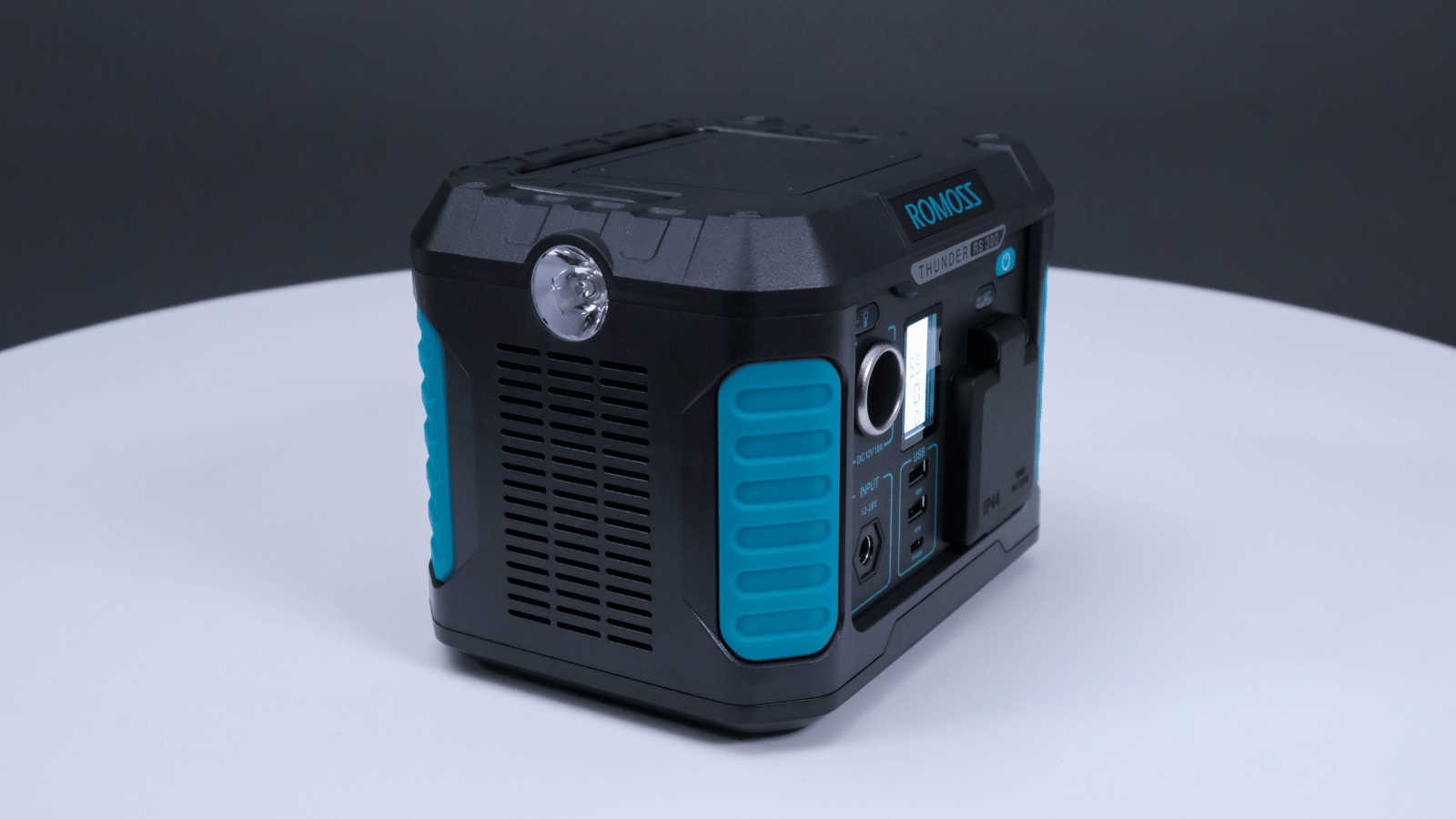
Unsurprisingly, Romoss hasn’t pushed the boundaries of design where the Thunder RS300 is concerned. It’s stuck with the tried-and-true look that’s so favourable in the portable power station space. See?
And if we’re being honest, what does it matter how a power station looks? It’ll be banished to some dark recess of your house and only summoned to action when the lights are off. If Romoss had its way, we’d be staring at a box of black plastic with some ports sticking out of its face. That’s sorta what you get, with Romoss splashing a dash of blue and some rubber onto the device’s corners to show a semblance of effort. It might not matter much, but we appreciate it.
Still, that doesn’t alleviate the RS300’s biggest crime: looking like one of your father’s favourite toolboxes. You can thank Romoss’ no-nonsense rugged design and attention to build quality for that. Seriously, we reckon this thing could withstand a tumble down a flight of stairs. The important bits – the internals – might agree to disagree.
Were it to survive that trip, it’d be left with a Type D (three-prong) plug socket with its own flap, two 18W USB-As and a singular 60W USB-C port. If you can find a use for the large round 12V/10A DC port, like powering some camping gear (or if you just really need a cigarette), that’s your business. All that’s left is the light-up display, a couple of buttons that’ll make this thing go whirr and the button for the side-mounted LED flashlight to illuminate your trip through the darkness.
The important bits
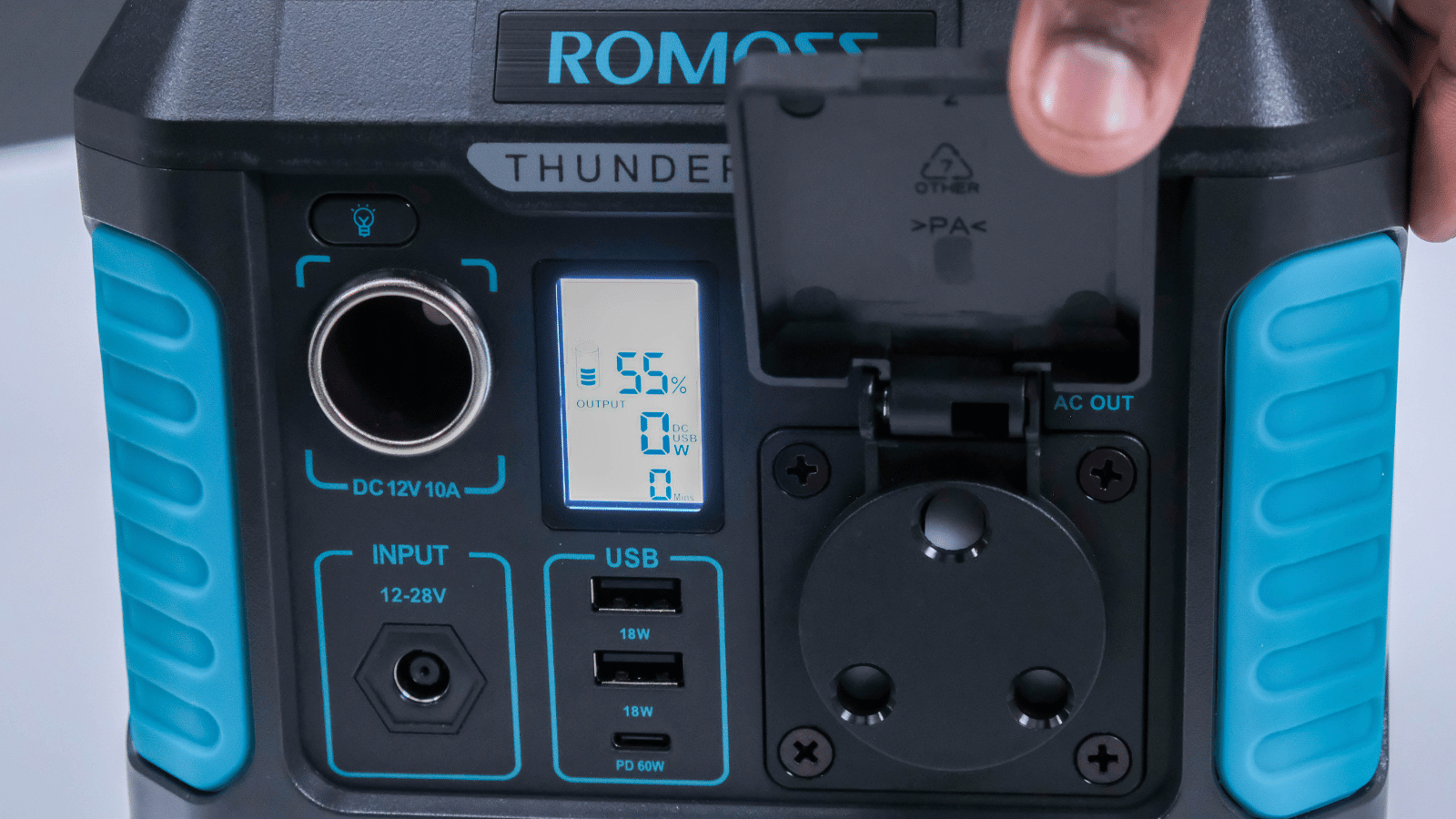
That Thunder RS300 isn’t some title dreamt up by Romoss in the hopes of sounding cool, that’s just a coincidence. The number refers to the station’s rated power output – 300W in this case. This guy will also manage a peak draw of 600W but anything over the rated output will drain the battery much quicker.
Stay within the 300W and you’ll manage to charge a phone or three, light up a lamp, and even keep a router going for a while. Signal strength is between you and your ISP, but the RS300 can guarantee the router stays on for longer than a standard two-hour bout of load shedding. We’re dealing with a 231Wh Ternary Lithium Battery here – which kept all that running for close to four hours.
You won’t hear much of the RS300 while it’s doing its thing. At most, a slight whirring will escape the RS300’s fan vents during a charge – something other power stations aren’t always capable of. That’ll be the station’s internal fans keeping things cool. It’s easily avoidable, too. Just stick it in a different room or near a window if you’re using a compatible solar panel – sold separately – to get your fill.
For most, the RS300 will get its juice from the provided AC charger. That’ll take roughly 4-and-a-half hours to fully charge up the RS300 from empty. In this case, empty means 5% – as most power station manufacturers warn against letting the power dwindle to 0%. Keep it charged around Eskom’s schedule, and you’ll hardly be left without power. Unless Eskom’s feeling especially nasty that day.
Romoss reckons the RS300 is good for 800+ charge cycles which we’re going to have to take its word on. In a world unbothered by Eskom, that’d be a rather high number we’d not even consider reaching. Unfortunately, in Eskom’s world, 800 cycles don’t feel like enough. We’re looking at a three-year death sentence or less if we’re continually bombarded with load shedding on the daily. Let’s… uh, hope it doesn’t come to that.
Not exactly featuristic
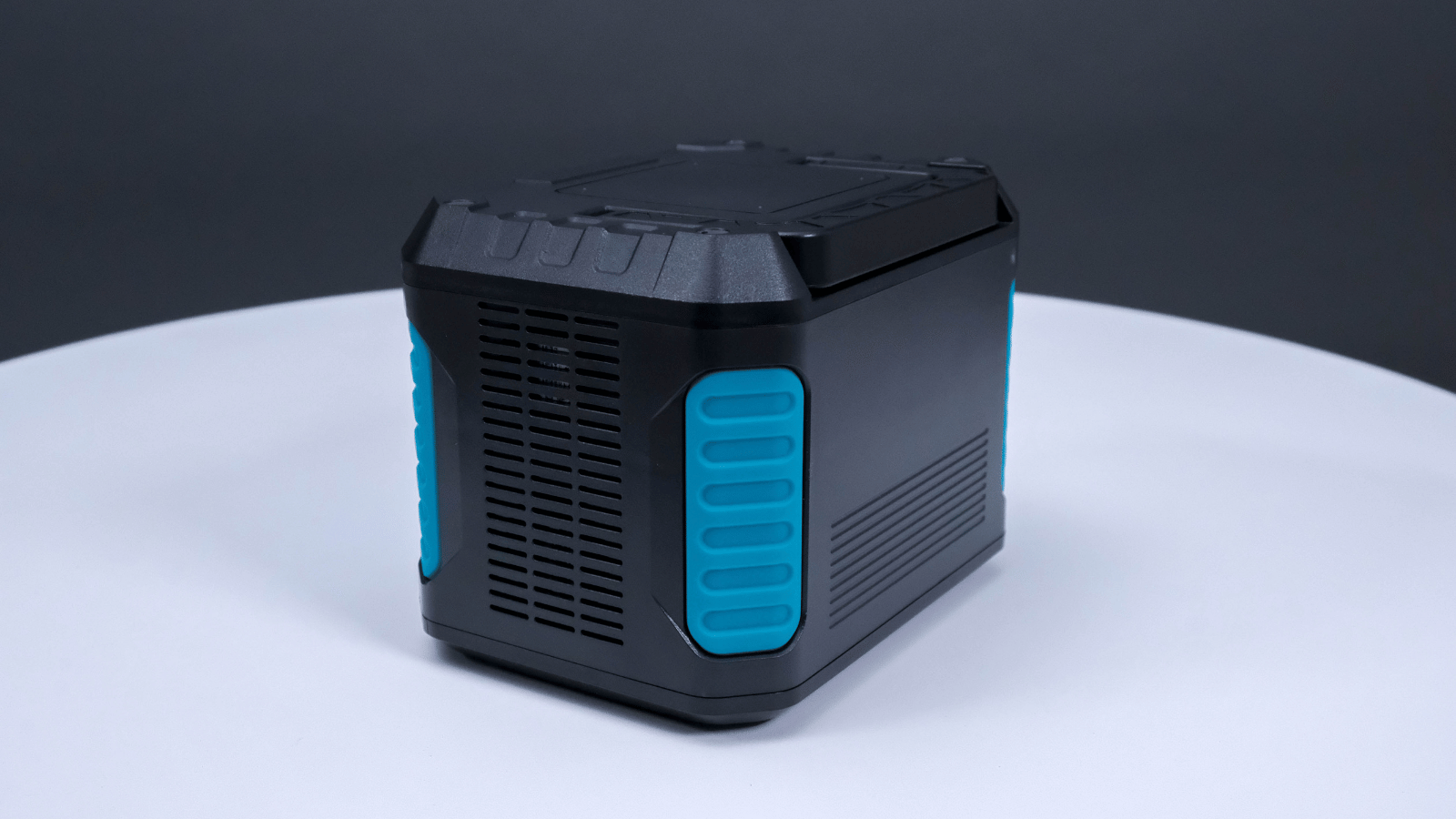
We’re not sure what you’re expecting here, it’s a power station. Romoss has kept additional features to a minimum. The LED flashlight is the only external feature worth noting. Spend the dough on Romoss’ more capable (and expensive) models and you’ll find a wireless charger sitting atop the shell. Internally, Romoss’ Thunder range does support power output while charging but doing so isn’t recommended. It’ll affect the battery’s lifespan and you may return hours later to find that both the device you needed charged and the battery are dead – proceed with caution.
Romoss Thunder RS300 verdict
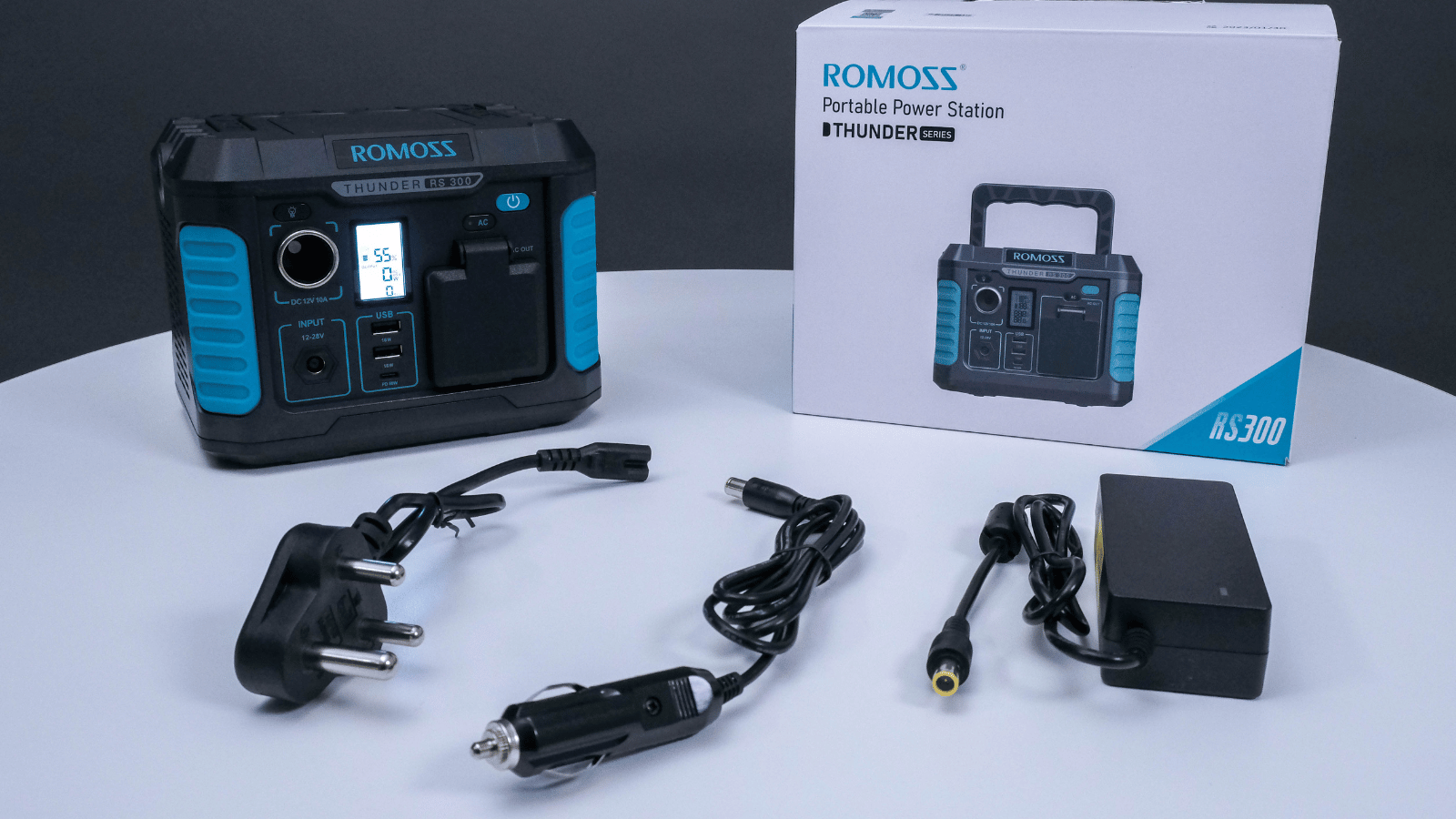
The Romoss Thunder RS300 isn’t exactly a powerhouse, but it’s a great companion to anyone without other load-shedding avoidance measures in place. Sure, it won’t power a microwave or kettle but it can put in a (rather quiet) shift for a much lower price of R4,000 (or cheaper if you’re quick enough).

